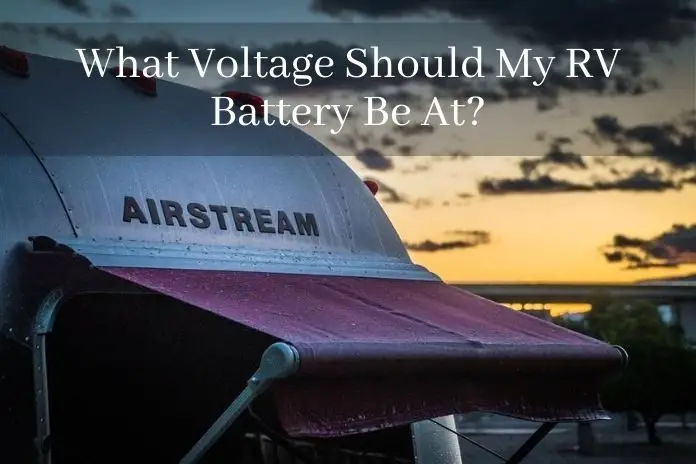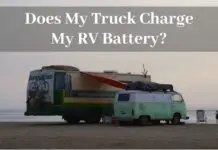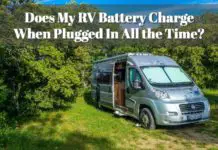
Recreational vehicles, or commonly known as RVs, are amazing and flexible machines that provide a lot of benefits to people. Apart from providing the comforts of your home while on the road, these vehicles also offer excellent travel flexibility at cheaper costs.
RVs are also considered one of the most fun ways to connect with the outdoors since they are suitable for camping, nature tripping, and any related areas. Owners can even set these vehicles as their home away from home.
This is why most owners of these kinds of vehicles today are outdoors enthusiasts and nature lovers. However, one of the most critical components an RV owner should keep in check is its power supply.
What voltage should an RV battery should have? RVs or recreational vehicles are equipped with two or more cells, depending on the setup. These vehicles are equipped with a starting battery called “chassis battery,” which is used to ignition and run the engine.
And the “house battery” is designed for deep cycle applications and used to support the RV and its electrical grid. Both the chassis and house batteries of an RV run in twelve volts, but they are used in different applications.
Since an RV’s house battery is used as the primary power source running, it should be a deep cycle battery that has a “resting” or “open-cell” voltage ranging from 12.6 volts to 12.9 volts when fully charged.
With a voltage of this amount, the house battery of an RV will power electronics hooked up with the system. However, since the entire electrical grid of the RV runs through the house battery, the runtime is limited.
As the voltage of the battery reduces, its ability to power more demanding devices will also decrease. So, the ideal resting voltage of an RV’s house battery is 12.6 volts to 12.9 volts.
Suppose you are planning to plunge in the community of “RVers” and getting your recreational vehicle.
You first have to learn the basics when it comes to the batteries used in RVs because it will allow you to maximize the use of energy. Having the basic knowledge of these batteries will also give you the proper awareness of your RV’s electrical grid.
The Two Kinds of Batteries Used on Recreational Vehicles
Due to heavy electrical load, recreational vehicles are hooked up with at least two batteries because one won’t be sufficient. The electronic devices hooked up on an RV’s system are more power demanding, and a regular car battery is not enough to run them.
Another thing about these vehicles is they are designed to rely on batteries for their electricals. To understand this better, you have to keep in mind that there are two kinds of applications within an RV.
1. Chassis Battery: The Cell Used for Ignition and Running the Engine
A vehicle won’t be able to start or run without an automotive cell. That brings us to the first kind of battery that RVs use, the starter battery, also referred to as “chassis battery.”
This cell is twelve-volt that acts like a regular car battery, which is responsible for ignition and running the engine. Starter cells are built with a lot of thin plates to expose a larger area of plates to its electrolyte.
This allows starting car batteries to deliver more current in short bursts, which is required to crank the engine.
2. House Battery: Power Source Supporting the RV and Devices
With a substantial electrical load, recreational vehicles have a dedicated battery as a power source to support its electric grid.
This is referred to as its house battery, responsible for supplying a steady and consistent amount of electricity to power all the electronics hooked up with the vehicle’s system.
House batteries are far different from the starter cell. These are true deep cycle cells built with thicker battery plates. This allows them to tolerate deep discharge and to be repeatedly recharged.
Deep cycle cells are compared through their reserve capacity, which is measured with amp-hours, which is the amount of current the battery can deliver for a specific amount of time before it gets discharged.
Essential Aspects to Learn and Understand About RV Cells
As I stated earlier. Having a more in-depth knowledge of the basic and essential concepts about the deep cycle RV batteries will allow you to be energy efficient. It will give you an idea of how you can efficiently utilize every bit of power from the house battery.
To further extend your knowledge about RV batteries, here are several crucial aspects of it to keep in mind.
Basic Understanding of the Various RV Batteries
RV cells come in a variety of choices categorized by type. Each battery type comes with advantages and disadvantages, and it will be up to you to decide what you think is best.
Feel free to go through the list below if you want to be familiar with different types of RV batteries and make sure to take some notes.
1. True Deep Cycle Batteries
A true deep cycle battery is a lead-acid type cell similar to marine batteries, as well as the ones used to power golf carts.
It has the same chemical structure as car batteries. Still, it is specifically designed to produce and deliver a consistent amount of current for longer periods of time, in contrast with car batteries designed to deliver a large amount of current in a short period of time.
This makes true deep cycle power cells ideal for RVs which run on batteries.
True deep cycle batteries also come in three sub-categories classified according to the electrolyte they use. These batteries are classified as the flooded or wet-cell battery, gel-type cell, and the absorbent mat glass or AGM variety.
Due to their distinct chemical structure, each of these sub-categories also has maintenance requirements.
2. Lithium-Based Batteries
Lithium-based power cells are deep cycle batteries regardless of battery chemistry they feature. Considered the latest innovation in battery chemistry, lithium cells have more to offer than their lead-acid counterparts.
Despite the expensive cost, lithium batteries are worth every penny because they offer higher energy density, translating higher capacity.
These cells are also lighter in weight and maintenance-free, making them a convenient choice. Lithium cells are also engineered and built with higher more charging cycles, which means longer service life.
A Battery Bank Makes RV Batteries Flexible
Multiple RV cells offer versatility and flexibility because joining them will allow you to increase your power source voltage or increase the current supply.
Having two or more RV batteries connected in a series connection adds voltage to the source while retaining the amperage of the output.
On the other hand, combining them in a parallel orientation increases the delivered current while maintaining the voltage.
It is also possible to have a series-parallel network of RV batteries, provided that you have at least four of them. A power bank of RV batteries in this connection increases both the voltage and the amperage of the current supplied.
RV Batteries Are Considered Seasonal and Stored for Months
We all know that recreational vehicles are stored for the winter, making RV power cells seasonal equipment. They are often stored for long periods of time during the entire winter season.
You have to keep in mind that all batteries undergo self-discharge over time, so leaving it idle and forgetting about it will drain them down to the wire. This has a significant effect on an RV battery’s lifespan.
The proper way to store an RV battery is by taking it out from the vehicle and storing it in your garage. And then regularly check the amount of charge left in it at least once a month, then charge it when its state of charge drops below 80%.
It is recommended to use a reliable RV cell monitor when checking for the battery’s actual charge state.





